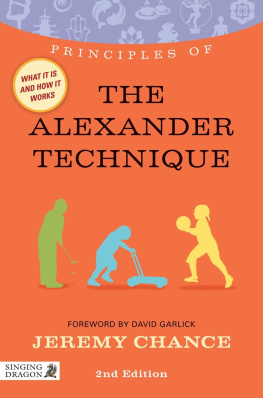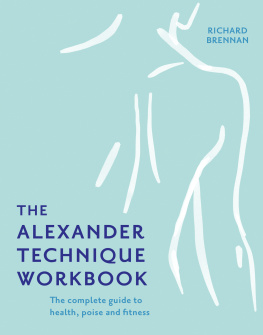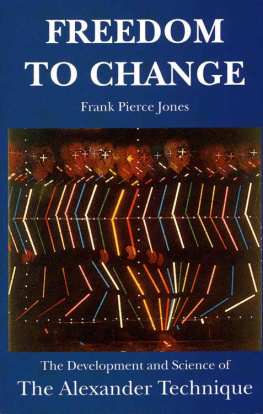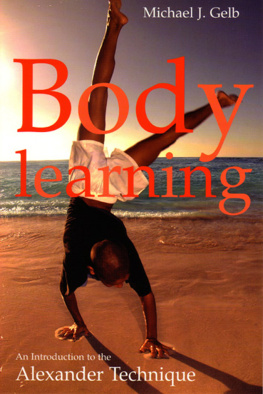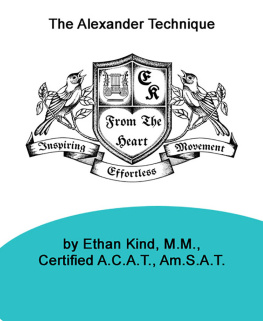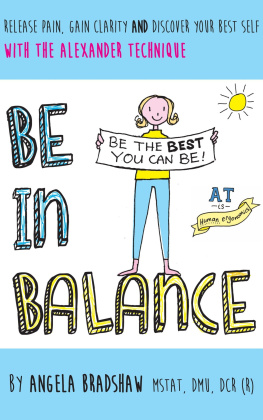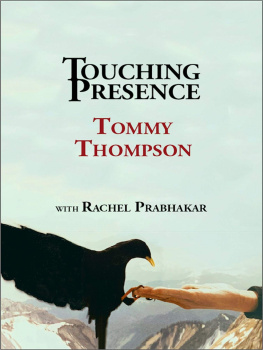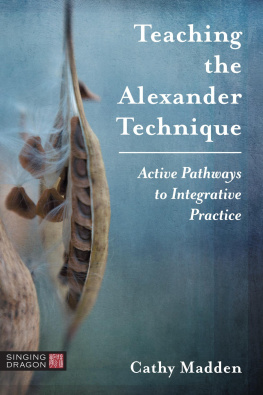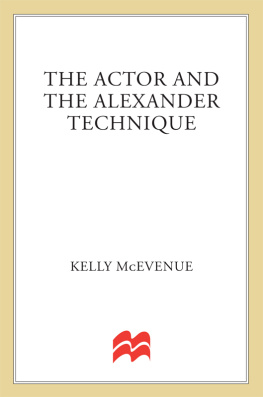Jeremy Chances excellent new book shines light on the long-hidden secrets of this incredibly powerful method. Once difficult to learn, Principles of the Alexander Technique makes the Alexander Technique easy to apply to a range of 21st-century, real-world health and performance issues.
Paul Lemberg, entrepreneur, business mentor, and author of Be Unreasonable
What Jeremy taught me about the Alexander Technique is surprisingly simple yet impactful, not only on my game of golf but also on my whole life. By becoming conscious of the unconscious, I have learned a way to stay younger and live longer. I recommend this book to anyone who seeks an improved quality of life that stems from a better understanding of how the mind and body work together.
Nobuyuki Idei, former Chairman and CEO, Sony Corporation
I was totally surprised that just by reading one chapter my voice got twice as loud and had much richer resonance!
Shigeko Suzuki, Vocalist, Japan Gold Disk Award winner
A hugely inspirational book on Alexander Technique which manages to engage the reader immediately. Creative, colourful, descriptive writing which is accessible to all, encouraging and intriguing at the same time. Will be recommending this to my clients. Many thanks.
Angela Bradshaw, Alexander Technique Teacher MSTAT, DMU, DCR(R)
other titles in the series
PRINCIPLES OF
BACH FLOWER REMEDIES
Stefan Ball
PRINCIPLES OF
CHINESE HERBAL MEDICINE
John Hicks
PRINCIPLES OF
CHINESE MEDICINE
Angela Hicks
PRINCIPLES OF
THE ENNEAGRAM
Karen A. Webb
PRINCIPLES OF
HYPNOTHERAPY
Vera Peiffer
PRINCIPLES OF
KINESIOLOGY
Maggie La Tourelle with Anthea Courtenay
PRINCIPLES OF
NLP
Joseph OConnor and Ian McDermott
PRINCIPLES OF
REFLEXOLOGY
Nicola Hall
PRINCIPLES OF
REIKI
Kajsa Krishni Borng
PRINCIPLES OF
TIBETAN MEDICINE
Dr. Tamdin Sither Bradley
PRINCIPLES OF
THE ALEXANDER TECHNIQUE
What it is, how it works, and what it can do for you
2nd Edition
Jeremy Chance

London and Philadelphia
This edition published in 2013
by Singing Dragon
an imprint of Jessica Kingsley Publishers
116 Pentonville Road
London N1 9JB, UK
and
400 Market Street, Suite 400
Philadelphia, PA 19106, USA
www.singingdragon.com
First edition published in 1998 by Thorsons, an imprint of HarperCollins
Copyright Jeremy Chance 1998, 2013
All rights reserved. No part of this publication may be reproduced in any material form (including photocopying or storing it in any medium by electronic means and whether or not transiently or incidentally to some other use of this publication) without the written permission of the copyright owner except in accordance with the provisions of the Copyright, Designs and Patents Act 1988 or under the terms of a licence issued by the Copyright Licensing Agency Ltd, Saffron House, 610 Kirby Street, London EC1N 8TS. Applications for the copyright owners written permission to reproduce any part of this publication should be addressed to the publisher.
Warning: The doing of an unauthorized act in relation to a copyright work may result in both a civil claim for damages and criminal prosecution.
Library of Congress Cataloging in Publication Data
A CIP catalog record for this book is available from the Library of Congress
British Library Cataloguing in Publication Data
A CIP catalogue record for this book is available from the British Library
ISBN 978 1 84819 128 0
eISBN 978 0 85701 105 3
Printed and bound in Great Britain
Dedicated to my teacher,
Marjorie Barstow
(18991996),
and to my dad
(19061988)
CONTENTS
Foreword
Jeremy Chance has made a significant contribution to the world of the Alexander Technique with his production and editing for the past 15 years of the high-quality international periodical, direction .
Jeremy has also made a significant contribution to the Alexander Technique in Australia as the moving spirit for the establishing of, and as the formulator of the constitution for, the Australian Society of Teachers of the Alexander Technique in 1984.
With this book Jeremy extends his contribution to the Alexander world as a communicator and a thinker in relation to the Alexander Technique.
The book will be of value to teachers of the Alexander Technique as a guide to communicating about the Technique from an expert communicator, as well as providing clear explanations for anatomy and physiology so relevant to the Technique.
To those who know little of the Alexander Technique but who would like to know more, this book is likely to emerge as the most useful exposition of the Technique available. The book is succinct yet comprehensive in setting the Alexander Technique in context, providing the anatomical and physiological basis for the processes of the Technique, describing a lesson (the unique transmission of sensory and motor information between teacher and learner), the importance of the learner in observing her/himself, as well as an overview of the different traditions in teaching the Technique.
Some leading thinkers and scientists of this century have contributed to the Alexander Technique by their public commendation of the Technique. John Dewey, unstinting in his praise for the Technique, was a seminal philosopher of education and of science in the USA in the early part of the century. Nobel Prize-winning physiologist Sir Charles Sherrington spoke in the 1930s of how impressed he was by the contributions by the layman F. M. Alexander to the understanding of the brains control of the musculoskeletal system. In the 1970s Nobel Prize-winning ethologist Niko Tinbergen used his prize-winning speech to draw the attention of the scientific and medical world to the importance of Alexanders observations.
This book will make its own distinctive contribution to the Alexander Technique by an expert communicator. I commend the book to all those who wish to know more about a unique Technique which can help restore the sixth sense of proprioception (muscle sense) to the individual and so lead to an improved functioning of mind and body.
David Garlick BSc(Med) MBBS PhD
(19332002)
ACKNOWLEDGEMENTS
I would like to thank Maureen Chance, William Brenner and Rosemary Chance, my precious and treasured teacher Marjorie Barstow, my students who have helped me develop this information, KAPPA that created the environment to write, Vicki Robinson for her early morning illustrations and Alexander himself.
Extracts from The Use of Self by F. M. Alexander, published by Victor Gollancz Ltd, are reproduced with kind permission.
PREFACE TO THE SECOND EDITION
Alexanders discoveries are my passion; they have been my life and work since the age of 20, and I intend to be living and teaching them up to my last breath.
Alexander first started teaching in Australia in the 1890s, yet the impact of his work on modern, mainstream society is hard to fathom or see. Today, Alexanders passionate vision of transforming education and the health of human society has withered away, leaving in its wake a profession that continues on, largely on the fringe; a profession whose members overall are about as much in demand as the actors who wait tables in New York.
A significant number of those who undertake the three years of teacher training will not go on to have a full-time teaching career: they will struggle to find pupils. Some might instead make it their hobby; others think of it as their vocation, while keeping their day job; some will co-opt it into their original career as some kind of performing artist. Compared to the numbers who have trained, precious few occupy their lives as full-time professionals. After over 100 years, is this all we can manage? It is deeply disappointing to me.
Next page
